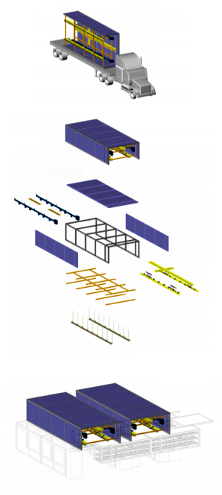Facebook takes design advice from flat-pack kings
 Facebook has unveiled plans for its latest massive data centre in Europe, and it will employ a distinctly Swedish approach to the build.
Facebook has unveiled plans for its latest massive data centre in Europe, and it will employ a distinctly Swedish approach to the build.
The company’s second data centre borrows heavily from the IKEA design book, using flat packed assembly to build a modular, changeable environment.
Facebook engineer Joel Kjellgren says the new facility will be built twice as fast as previous centres, but with far less material used. He says the company will be rolling out its ‘rapid deployment data centre’ (RDDC) concept for the first time.
Kjellgren says the facility will become a model for the next generation of data centres, using flat-pack assemblies for walls, which are made into an easily-transportable set of standard modules.
The designers say using identical wall panels made from standard components will allow Facebook to save time and materials, with a well-tested assurance of quality.
For the huge array of computers and digital storage that make up the data centre; pre-assembled steel frames with cable trays, power buses, containment panels and lighting are installed before shipping, to then provide the services normally found slung above the computer racks.
Facebook's data centre architect Marco Magarelli said the design allows engineers to reduce the width of ‘hot aisle’ exhaust containment to just 910 millimetres. The improvement means the overall data length of the data hall can be trimmed by about 8.5 metres, compared to previous designs.
Facebook’s Luleå 2 data centre will also use renewable hydroelectric power from the nearby Lule River.








 Print
Print